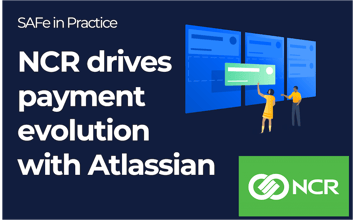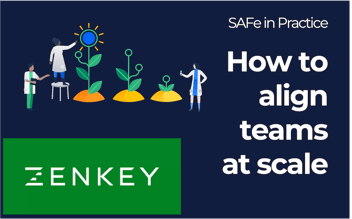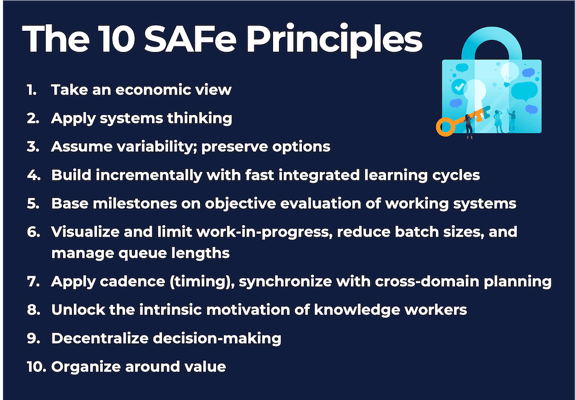The debut of version 6.0 in March 2023 has spurred a new wave of adoption of the SAFe framework. Built for the new world of work, SAFe 6.0 promotes increased adaptability amid times of rapid change, in addition to the existing flexibility of agile.
If these developments have you wondering if SAFe is right for your team—or if you’re in need of an agile methodology to begin with—it’s helpful to know the best use-cases for SAFe. SAFe is one formalization of agile, but it isn’t always right for every organization. Understanding the key differences between SAFe and other agile methodologies will allow you to choose the option that will work best for your business goals.
What is the Scaled Agile Framework (SAFe)?
Many kinds of agile processes exist, all built using the principles outlined in the Agile Manifesto. SAFe is the leading framework for scaled agile, a set of processes, vocabulary, and best practices meant to unite teams and create smooth, standardized agile workflows that can be easily scaled.
SAFe’s ten guiding principles synthesize ideas from lean, agile, and DevOps to orient agile concepts towards a unified organizational culture, emphasizing that decentralization, autonomy, and flexibility don’t have to lead to near-sighted decision-making and a lack of collaboration.
What is better for my organization: SAFe or traditional agile?
Small teams vs. large enterprises
Agile focuses on small-to-medium teams and projects (hence the need for a framework in which to scale it). If your business is an SMB, or you’ll only be supporting agile work across a small section of it, you probably don’t need SAFe. SAFe is designed to support agile operations in a larger organization, extending across business processes. It contains documentation and processes that encompass many teams and team members, and can be used across the whole enterprise to align operations with value creation.
Flexibility vs. coordination
As Atlassian puts it, there is no “right” way to practice agile. Agile teams are meant to be flexible and shift, built for cross-functional teams who will often change roles and structure. Many agile frameworks exist—most prominently, Scrum and Kanban—and teams can pick and choose the processes and structures they want to use. Traditional agile is therefore more adaptable to each team, even from one iteration to the next.
While businesses can choose the SAFe configurations they’d like to use, SAFe roles and interdependencies are prescriptive: each role assignment is meant to be permanent, and in fact requires some training to learn its specifics. SAFe teams aren’t designed to change as nimbly, but function in one configuration for a long time, in order to promote better coordination between operations and business goals. Plus, SAFe includes a preset vocabulary meant to get everyone on the same page—great for larger organizations, but likely unnecessary for small teams.
 At payment provider NCR, agile supported collaboration and efficiency, but teams struggled to keep daily operations across different teams both in sync and connected to the business’ overall goals. Implementing SAFe in Jira Align helped them unify agile processes across the enterprise, bringing all teams together with a common vocabulary and supporting fuller use of their Atlassian tool stack.
At payment provider NCR, agile supported collaboration and efficiency, but teams struggled to keep daily operations across different teams both in sync and connected to the business’ overall goals. Implementing SAFe in Jira Align helped them unify agile processes across the enterprise, bringing all teams together with a common vocabulary and supporting fuller use of their Atlassian tool stack.
Adaptable ceremonies vs. prescribed ceremonies
"Ceremonies" are a core tenant of agile frameworks. They’re formalized processes designed to be repeated during each sprint, in order to promote fast-moving development and continuous improvement.
SAFe ceremonies are somewhat rigid to support continual coordination between several teams and higher-level business goals. These ceremonies include the agile tenets of continuous improvement and moving quickly, but aren’t designed to be customized to an individual team’s preferences. In other agile frameworks, these processes can be changed and tweaked as often as each iteration, allowing teams to sample various methods from sprint to sprint.
 Eight cell service competitors joined together to build single sign-on app Zenkey, but they struggled to communicate due to their highly disparate processes and confidentiality concerns. Using SAFe’s defined ceremonies on a repeated basis helped build trust among the Zenkey team, leading to more open conversations and increased efficiency.
Eight cell service competitors joined together to build single sign-on app Zenkey, but they struggled to communicate due to their highly disparate processes and confidentiality concerns. Using SAFe’s defined ceremonies on a repeated basis helped build trust among the Zenkey team, leading to more open conversations and increased efficiency.
Easing the path to implementation with the right tool and support
Whether your organization opts for SAFe or another agile methodology, the right tools and support can make or break your implementation. As the leading agile toolset, the Atlassian suite can support many kinds of agile workflows and provides resources for teams undergoing an agile transformation. For a higher level of support, from implementation and onboarding to ongoing maintenance and monitoring, consider an external consultant.
Our team at Contegix can provide the industry expertise in configuration and best practices that your team needs to make the most of agile.
Contact us to learn more about our expert help today!

